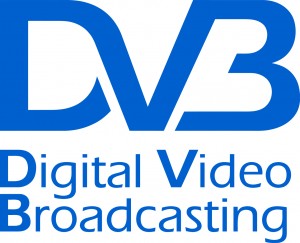DVB Steering Board approval paves way for UHDTV with HDR, HFR and NGA
 The DVB Steering Board recently approved a new version of the audio-visual coding specification, TS 101 154, adding support for High Dynamic Range (HDR), Higher Frame Rates (HFR) and Next Generation Audio (NGA). The new specification is a milestone for the industry, allowing broadcasters and CE manufacturers to provide enhanced video and audio in their products and services. This will enable DVB services offering UHDTV with HDR. This would be the first element of UHD-1 Phase 2 features to be implemented and could be available from next year.
The DVB Steering Board recently approved a new version of the audio-visual coding specification, TS 101 154, adding support for High Dynamic Range (HDR), Higher Frame Rates (HFR) and Next Generation Audio (NGA). The new specification is a milestone for the industry, allowing broadcasters and CE manufacturers to provide enhanced video and audio in their products and services. This will enable DVB services offering UHDTV with HDR. This would be the first element of UHD-1 Phase 2 features to be implemented and could be available from next year.
High Dynamic Range (HDR) significantly increases the contrast ratio and results in pictures with more ‘sparkle’. The DVB HDR solution supports Hybrid Log Gamma (HLG) and Perceptual Quantizer (PQ) transfer functions. Furthermore, the new specification defines Higher Frame Rates (HFR), offering sharper images of moving objects by going beyond the current 50/60 frames per second. When it comes to audio, DVB has added the latest Next Generation Audio (NGA) schemes to provide immersive and personalized audio content using object- or scene-based coding.
The specification has been published as BlueBook A157 and will be passed to ETSI for formal publication as TS 101 154 v2.3.1.
Commenting on the new specification, DVB Chairman, Peter MacAvock said “The approval of the specification is the result of enormous effort from the contributors, and further evidence of DVB’s leadership in the broadcast industry. DVB views the extended audio-visual coding specification as a key enabler for exciting new products and services.”
Completing the specification on time required great dedication, with over 30 companies and other interested parties participating in the Technical Module group on audio-visual coding, TM-AVC. It is estimated that some 50 online meetings and 10 days of physical meetings took place in TM-AVC during the year that it was working on the specification. Commercial guidance on Next Generation Audio was provided by CM-AVC, whilst commercial guidance on UHD-1 Phase 2 video was provided by CM-UHDTV. This commitment by DVB Members bears testament to how standards’ bodies play an important role and emphasizes the importance of getting consensus and wide approval for new standards.
Ken McCann, Chair of TM-AVC, said “This latest revision of the TS 101 154 adds important new features to ensure that DVB continues to meet the industry’s demands for ever-improving video and audio quality. It’s a great team effort that marks the culmination of the most intense year of work in TM-AVC’s history, 21 years after the first version of the specification was published as BlueBook 001.”
Virginie Drugeon, Vice-Chair of TM-AVC and chief editor of the specification, added “This new revision of the TS 101 154 specification is a major technical milestone that was made possible by the huge amount of excellent technical work performed by the many highly qualified television engineers involved in DVB TM-AVC. DVB Members are now looking forward to new exciting television services, including sparkling images, better motion representation, as well as new immersive and personalized audio services.”
David Wood, Chair of CM-UHDTV who oversaw the work on the Commercial Requirements for UHD-1 Phase 2, commented “When they draw up the history of television, the agreement by the DVB Steering Board to this specification will surely be writ large. It marks the culmination of many years work by scores of DVB Member engineers, and is probably the tipping point for the new age of UHDTV.”
